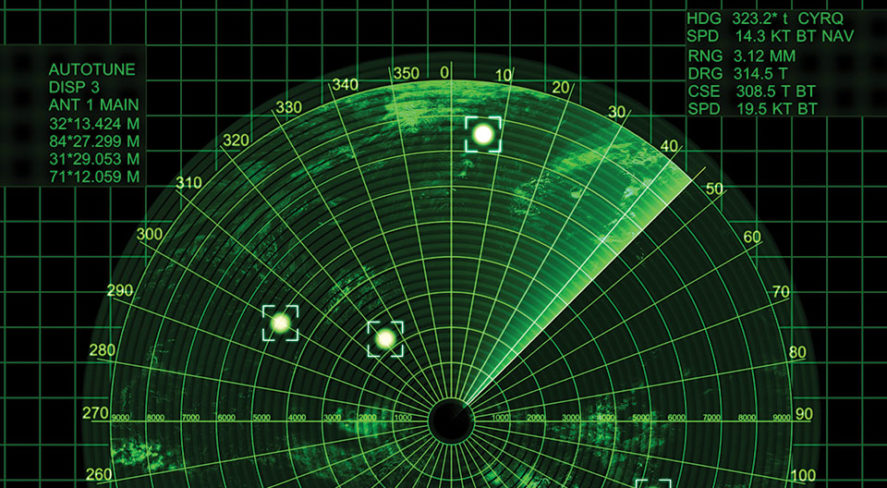The Still Essential 90-Year-Old Technology: Radar Can Do What Visual Security Solutions Alone Cannot


Since 1934, when radio detection and ranging was introduced to the U.S. military, radar has added value to numerous applications across a wide range of industries.
Utilizing microwaves to determine the range, angle and velocity of objects, radar’s dynamic ability to map human and vehicle movement and deliver early warnings of intruder activity has made it indispensable to military and commercial perimeter security efforts alike.
In the 1930s, radar revolutionized ground, air and ship-based warfare.
Today, radar has drastically improved the protection of airports, utilities, data centers and many other sites.
The Benefits of Radar
Many modern perimeter intrusion detection systems (PIDS) rely heavily on camera-based solutions to monitor areas of importance. In ideal conditions, these solutions are effective, especially with the advent of artificial intelligence-enabled video analytics to detect intruders. However, problems arise for these devices in adverse environmental and imaging conditions, poor visibility, areas with obstructions, and hours of darkness.
Radar directly addresses these challenges by offering security personnel the ability to detect intruders 24/7, even in harsh weather and low or no-light scenarios. When ground-based radar is integrated into PIDS systems outfitted with visible and/or thermal cameras, security personnel can maximize detection coverage, receive early warnings of threats, and gain game-changing intelligence in a turnkey, end-to-end security solution.
The Power of Layering PIDS Sensors
A trusted strategy when strengthening a PIDS involves layering multiple sensor technologies to maximize the strengths of each sensor while compensating for the limitations of any one technology. When securing large open areas, pan-tilt-zoom (PTZ) multi-sensor (thermal/visible) cameras paired with radar can provide immense benefits to security teams.
Radar can scan a 360-degree area as often as four times per second at ranges of up to several miles. If radar integrated with sophisticated management software detects an object of interest, it will commence two processes: It will, one, relay the precise GPS location of the intruder to central command and display it on a dynamic map, delivering real-time insights, and, two, initiate slew-to-cue functionality for integrated PTZ cameras in order to visually verify the location of the alarm, which allows security operators to dispatch a response with high confidence that the threat is real. Using PTZ cameras with both thermal and visible imagers allows security operators to assess threats that the radar detects in any lighting conditions and in inclement weather.
This layering of intrusion detection sensors enables system-wide redundancy, which reduces the risk of costly false alarms. It also enables target tracking prioritization by integrating PTZ camera software with logic, such as “follow closest” or “follow furthest,” taking the operator out of the equation and allowing personnel to focus their time on response efforts.
A layered, multi-sensor PIDS ensures that security personnel in a remote command center always have eyes on the target, regardless of conditions, improving overall threat assessment and accelerating real-time response.
Optimal Applications for Radar
Though there are many different models of radar devices, purpose-built and specialized to address individual needs, the following three applications effectively capture the range, reliability and versatility benefits that radar offers.
Wide-Area Monitoring
Because radar systems can scan exceptionally large areas given their wide field of view and long-range detection, they provide true wide-area protection and situational awareness well beyond the fence line. In scenarios where multiple cameras would need to be installed to cover a 360-degree field of view, integrating a single security radar system alongside strategically installed thermal and visible cameras delivers the same coverage with an extended detection range, while using fewer devices.
24/7 Surveillance
Because no two security environments are the same, a one-size-fits-all PIDS configuration does not exist. Add in ever-changing environmental conditions and often unpredictable visibility limitations and designing a PIDS with consistency and reliability in mind is a challenge. Because radar systems transmit high-frequency electromagnetic signals to a location and measure the radiation of the reflections to detect foreign objects, they are unaffected by many of the challenges that limit visual camera performance.
C-UAS Systems
The above benefits are especially important when security personnel are designing a PIDS to address novel airborne threats, such as unmanned aerial systems (UAS). When integrating effector tools, such as jammers and spoofers, into a PIDS outfitted with thermal sensors and radar, an already powerful system transforms into a C-UAS solution. Built to detect, identify, locate, track and mitigate both ground-based and aerial threats, these solutions rely on radar to detect incoming UAS, PTZ and multi-sensor systems to verify detection alerts, and effectors to neutralize the threat.
Optimal Verticals for Radar
The following verticals are examples of sites where radar provides critical added value for perimeter protection.
Airports
For large airports with perimeters spanning several miles, security managers can deploy radar and experience the combined benefits of robust detection range and wide-area coverage. For airports too large for the human or even digital eye to surveil, or where there is 24/7 activity, radar delivers a strategic advantage in its ability to monitor the perimeter and tarmac around the clock.
Utilities
As reported by the electricity nonprofit organization CIGRE, 88% of substations experience at least one break-in every year. For electric utilities, whose rural substations often have no full-time security staff onsite, early intrusion detection is critical for crime prevention. Radar can detect intruders long before they reach the fence line, allowing a remote security officer to quickly assess alarms, verify threats by reviewing video footage and dispatch police before the situation escalates and equipment is damaged or stolen.
Data Centers
According to the “2020 State of the Data Center Report” from Data Center World, 50 percent of respondents said their biggest security concern was “outside human threats.” Typically, for large enterprise data center locations, multiple data centers are built within a single perimeter in a remote environment. Integrating radar into a PIDS ensures that all critical areas are monitored so that no threat goes unnoticed.
Conclusion
With reliable performance in all weather and lighting conditions, simultaneous tracking of multiple targets, and precise geolocation capability, radar adds a critical layer of intrusion detection to any PIDS. When paired with PTZ cameras, radar can activate alarms and guide the cameras for streamlined target tracking, visual verification of threats, and faster reaction times.
Kai Moncino (kai.moncino@teledyneflir.com) is director of global business development, security, at Teledyne FLIR (flir.com).
